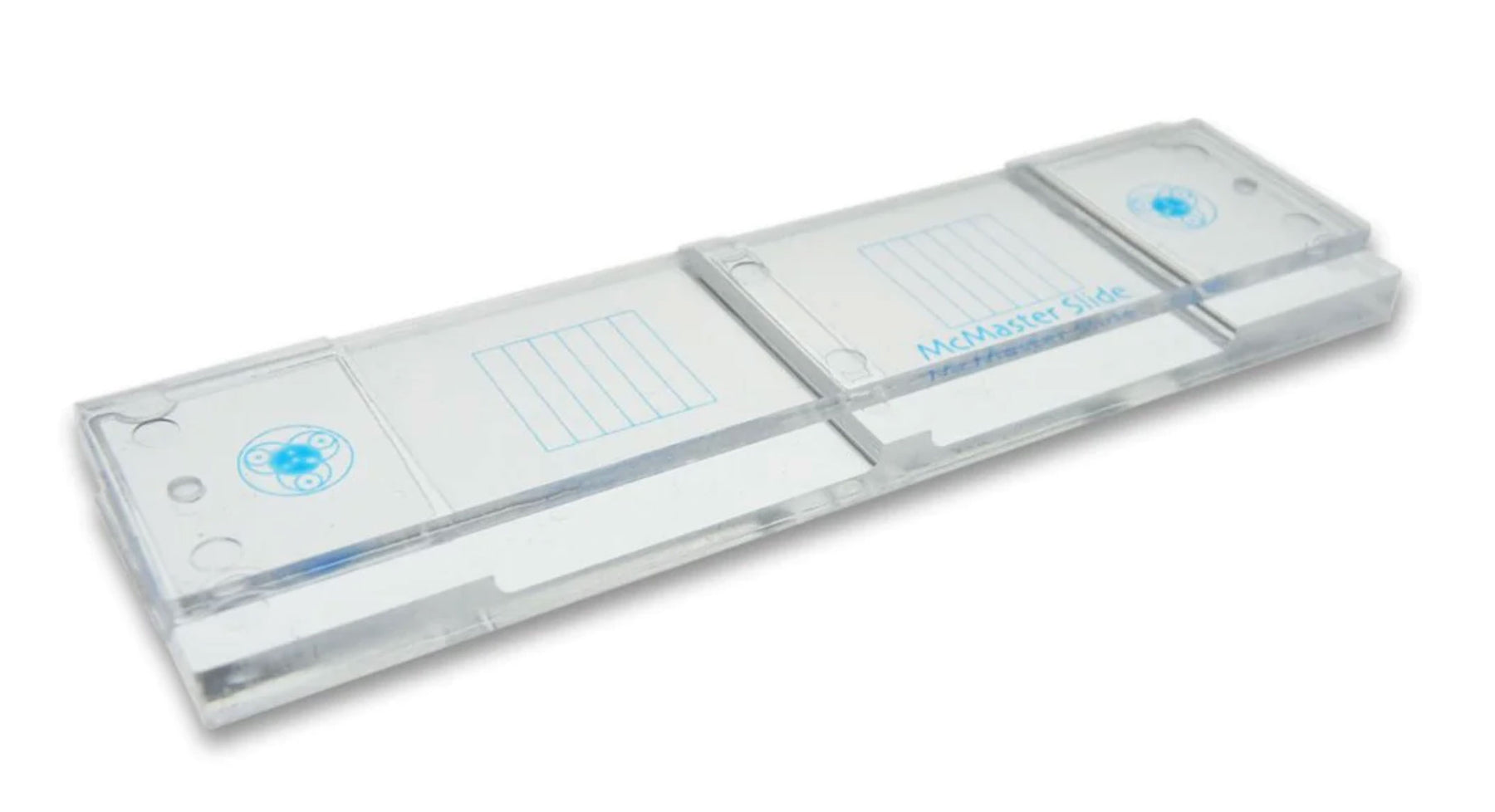
How to use and care for the McMaster test slide for faecal worm egg counting
The McMaster method is one of the most prominent techniques for monitoring parasite levels in animals.
Originally developed at the University of Sydney in 1939, this new approach used a special microscope slide to count the number of parasite eggs in a given sample of animal faeces quickly and easily.
The sample is mixed with a specific flotation fluid that causes any eggs to float to the top of the lined counting chamber in the McMaster slide, where they can be counted using a faecal worm egg counting microscope.
Here’s a quick guide on how to use and care for a McMaster slide.

How to use a McMaster counting slide
The McMaster method is generally very easy to use.
However, many different variations of the technique have emerged over the years, so you may encounter some minor differences depending on your approach or specific needs.
Fortunately, the core methodology remains largely the same so this example will give you a good idea of what to expect.

What you’ll need
- Compound microscope (with mechanical stage)
- McMaster slide
- Flotation solution (or ingredients)
- Containers
- Stirring implement
- Pipette
- Protective gear (gloves, mask, apron)
Method
- Create the required amount of flotation solution in a container.
- Add the required amount of faeces to the flotation solution.
- Use your stirring implement to crush and stir the faeces into the solution.
- Take your pipette and use it to stir the solution, then suction up a sample while you stir.
- Fill the counting chambers of the McMaster slide using the pipette.
- Transfer the McMaster slide to the stage of your microscope.
- Count and record the number of parasite eggs within the gridlines of each chamber.
- Calculate the number of eggs per gram – usually a simple multiplication of 25 or 50, depending on the quantities of faeces and flotation solution used.

How to care for your McMaster counting slide
McMaster slides are designed to be reused – they’re very easy to clean and maintain.
In many cases, simply rinsing them out thoroughly with warm water is enough.
If the chamber still appears dirty, soak them for a few minutes in warm soapy water, before rinsing them out again.
Allow the slides to air dry.
Also available to purchase with our Faecal Egg Count Kit
